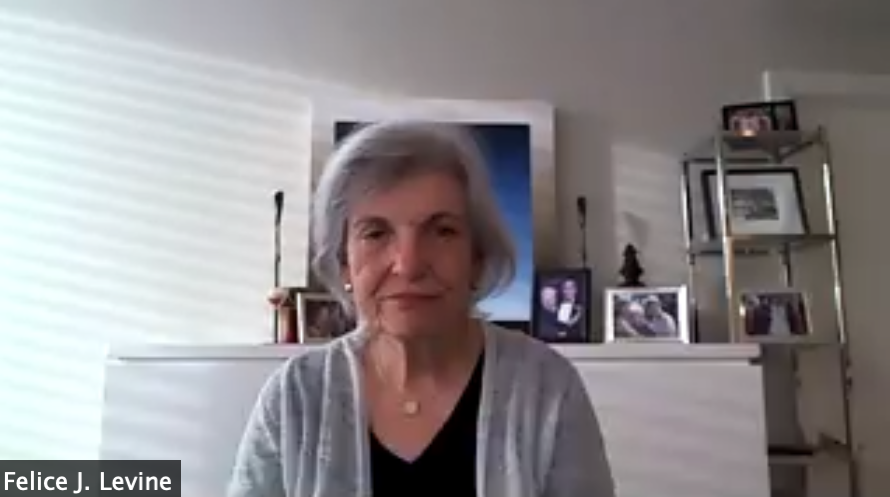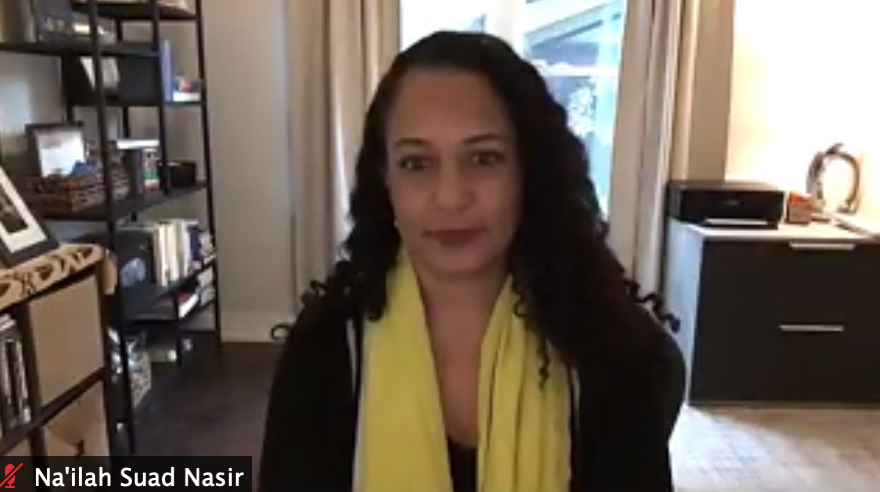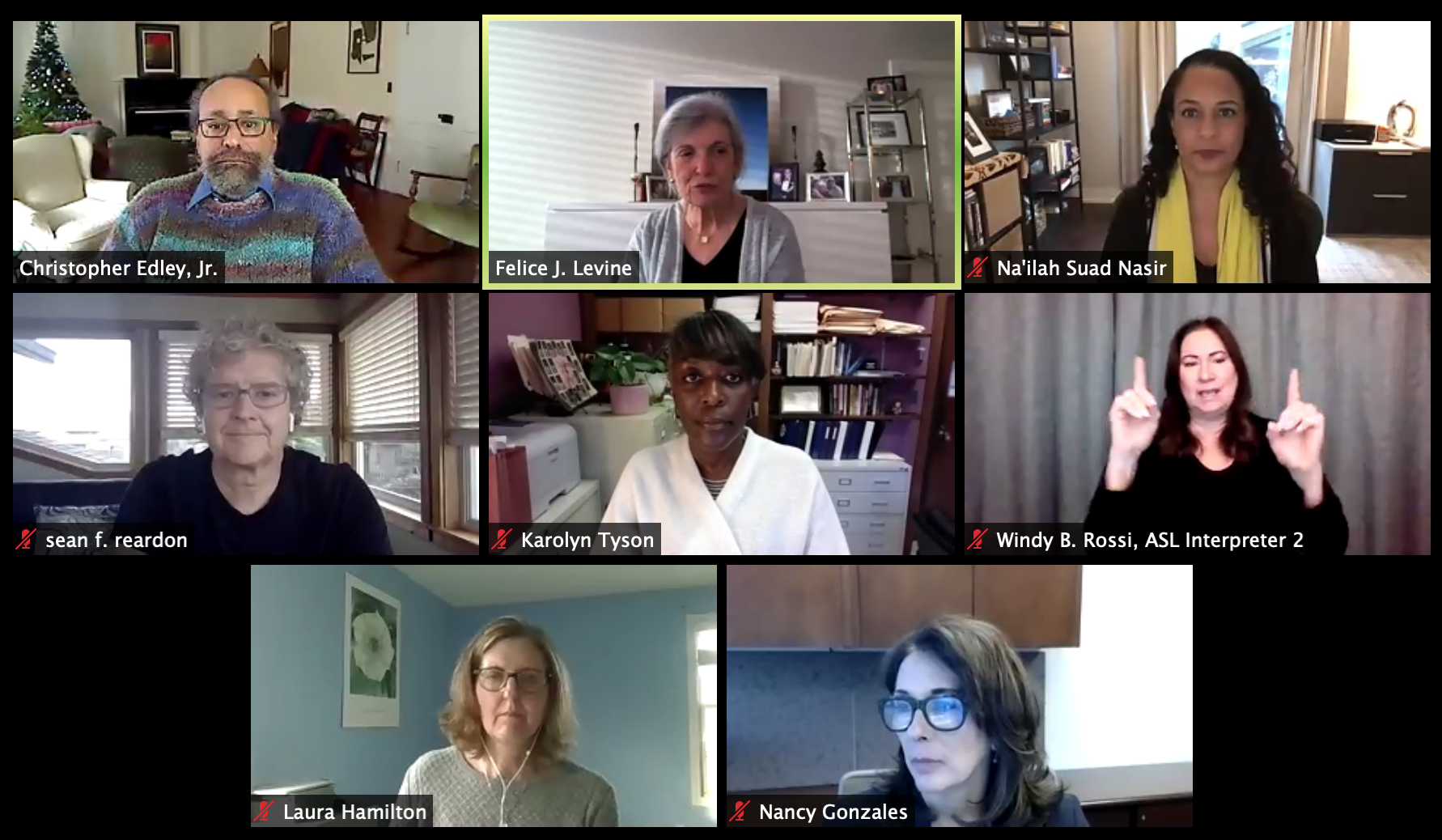December 2020
 |
| AERA Executive Director Felice J. Levine |
On December 15, AERA and the National Academies of Sciences, Engineering, and Medicine held an interactive forum to examine the research needs and implications of the Academies’ 2019 report Monitoring Educational Equity. The broadcast drew more than 1,800 researchers, practitioners, policy experts, and other viewers from nearly 60 countries.
The Academies report proposes a system of indicators of educational equity and serves as a framework to help policy makers better understand and combat inequity in the U.S. education system. The forum took up four of the proposed indicators—racial, ethnic, and economic segregation; non-exclusionary disciplinary policies; access to non-academic support for students; and access to high-quality academic supports—to frame the question of where the research and R&D agenda should go from here.
“We were thrilled to hold such an important and timely research forum with the National Academies,” said AERA Executive Director Felice J. Levine in her welcoming comments. “This is an incredibly challenging moment for educators and education systems in the United States and around the world. Issues of equity are pervasive and more challenging than ever, as we deal with the transformation of education brought on by the COVID-19 pandemic.”
Levine served as moderator of the event along with Spencer Foundation President and AERA President-Elect Na'ilah Suad Nasir, who also provided opening comments.
 |
|
Spencer Foundation President and
AERA President-Elect Na'ilah Suad Nasir
|
“This project is not only an example of what it means to think seriously about equity and build it into the system, but also an example of what happens when we, as scholars, think about how we can utilize our work and the robust body of research findings to have impact and to work toward transforming systems in really important ways,” said Nasir.
Christopher Edley, Jr. (Opportunity Institute; University of California, Berkeley, School of Law), who chaired the National Academies panel that produced the report, gave a brief presentation on the report’s key findings.
“This report not only lays out a system of indicators of educational equity, but also describes some of the follow-on work needed to advance such a system through public consensus, engineering, construction, and continuous maintenance,” Edley said. “Our hope is that all of this work can continue and lead us to a shared understanding of what educational equity should mean.”
Edley’s presentation served as context and catalyst for an engaged discussion with four other scholars who served on the Academies panel—Nancy Gonzales (Arizona State University), Laura Hamilton (ETS), Sean F. Reardon (Stanford University), and Karolyn Tyson (University of North Carolina, Chapel Hill). (Participant biosketches are available on the event webpage.)
 |
| Christopher Edley, Jr., Felice J. Levine, Na'ilah Suad Nasir, Sean F. Reardon, Karolyn Tyson, ASL Interpreter, Laura Hamilton, and Nancy Gonzales. |
During a highly engaging conversation, forum participants tackled a range of issues related to indicators of disparities in student outcomes and access to educational opportunities. These included the current lack of consistent information and data selection strategies to document course quality, the relationship between accountability measures and educational equity measurement systems, collaborations between researchers and schools and districts, the context in which the indicators should be used, the importance of data comparability across different educational jurisdictions, and ways to enhance the development of indicators.
The forum and an active discussion among attendees underscored the need and priority for developing indicators to address questions of educational equity.
“We want the indicators to tell us how the system is functioning and track how differently or equally the system is providing to children,” Reardon said. “Without comparable measures across space and time, we can't benchmark them against each other and we can't measure progress toward our goals.’”
Tyson noted the difficulty of developing certain indicators. “There are lots of things that we don't quite know how best to capture,” she said. “For example, we don’t have any direct way of measuring dehumanization and marginalization. What can we do to begin to capture what that process is?”
Gonzales emphasized the importance of the monitoring system “being in the right hands,” adding, “We need to think about who is moving into positions to utilize the system, who are the researchers we are bringing in, what are the questions we are asking in the research.”
Edley noted that “instead of holding students accountable, what much of our accountability measurement system does is indicate to adults where we are not succeeding in delivering the education we promised.” He added that “it is essential to collaborate with jurisdictions for early education to refine the equity indicators and build consensus among the stakeholders.”
During the audience Q&A segment of the event, attendees raised thoughtful questions about the educational equity indicators proposed in the report, their various potential uses for urban, suburban, and rural schools, and issues of cross-tabulating indicators with subgroups of student populations.
After the audience questions and closing thoughts from the panel, Levine and Nasir concluded the forum by thanking the participants and emphasizing AERA’s commitment to fostering conversations on educational equity among researchers, practitioners, and policymakers.
“With the darkness we have experienced this past year, it has been encouraging to have opportunities like this to come together as a community of scientists to address crucial issues and help set a course for future work,” said Levine.
The event webcast is available here.